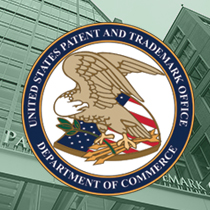OSI Pharmaceuticals v. Apotex is unlikely to be a cure-all for overcoming Section 103 rejections for pharmaceutical method of treatment claims, but it still may be useful in certain limited fact-specific situations.
Editor’s Note: The author acted as counsel for the petitioner, Mallinckrodt, in the case discussed here.
 Earlier this month, Mallinckrodt succeeded in its inter partes review (IPR) challenge against patent owner Biovie, Inc. (Biovie). The Patent Trial and Appeal Board’s (PTAB’s) final determination held that all claims of Biovie’s U.S. Patent No. 9,655,945 (the ‘945 patent) were unpatentable. The claims of Biovie’s ‘945 patent, directed to administering terlipressin to ascites (abnormal buildup of fluid in the abdomen) patients, were deemed anticipated and/or obvious over the prior art. During the IPR, Biovie attempted to use the recent Federal Circuit decision from OSI Pharmaceuticals v. Apotex (OSI) as a shield to patentability, but the shield was unsuccessful. As such, OSI is unlikely to be a cure-all for pharmaceutical method of treatment claims, in IPR proceedings or otherwise.
Earlier this month, Mallinckrodt succeeded in its inter partes review (IPR) challenge against patent owner Biovie, Inc. (Biovie). The Patent Trial and Appeal Board’s (PTAB’s) final determination held that all claims of Biovie’s U.S. Patent No. 9,655,945 (the ‘945 patent) were unpatentable. The claims of Biovie’s ‘945 patent, directed to administering terlipressin to ascites (abnormal buildup of fluid in the abdomen) patients, were deemed anticipated and/or obvious over the prior art. During the IPR, Biovie attempted to use the recent Federal Circuit decision from OSI Pharmaceuticals v. Apotex (OSI) as a shield to patentability, but the shield was unsuccessful. As such, OSI is unlikely to be a cure-all for pharmaceutical method of treatment claims, in IPR proceedings or otherwise.
A Deeper Look at OSI
In OSI, an earlier finding of obviousness by the PTAB was overturned by the Federal Circuit in favor of the patent owner. Since the patent claims at issue in OSI were directed to methods of treatment (non-small cell lung cancer (NSCLC)) and the claims of the ‘945 patent were also directed to methods of treatment (in patients with ascites due to liver cirrhosis), there are natural parallels to be drawn. In the IPR2018-00974 case, the patent owner argued that, like the asserted references in OSI, the prior art did not disclose information or reliable data about terlipressin’s efficacy in treating ascites as claimed by the ‘945 patent. Indeed, any patent practitioner arguing for the patentability of medical treatment claims may be tempted to rely upon OSI.
Digging deeper into the facts of the case, OSI Pharmaceuticals, LLC was appealing the PTAB decision holding claims 44–46 and 53 of its U.S. Patent No. 6,900,221 unpatentable as obvious. Claim 44 was considered exemplary of the ‘221 patent and recited the following:
- A method for the treatment of NSCLC (non small cell lung cancer), pediatric malignancies, cervical and other tumors caused or promoted by human papillomavirus (HPV), Barrett’s esophagus(pre-malignant syndrome), or neoplastic cutaneous diseases in a mammal comprising administering to said mammal a therapeutically effective amount of a pharmaceutical composition comprised of at least one of N-(3-ethynylphenyl)-6,7-bis(2-methoxyethoxy)-4-quinazolinamine, or pharmaceutically acceptable salts thereof in anhydrous or hydrate forms, and a carrier.
The EGFR inhibitor compound recited in claim 44 is more commonly called “erlotinib” and its use as treatment of NSCLC was at issue in the OSI case. NSCLC is one of the leading causes of cancer deaths and its treatment is highly unpredictable.
The crux of the issue in OSI was that EGFR inhibitors, like erlotinib, were known to be effective in vitro, but very few were actually effective at treating cancer in the body. Thus, there was a high failure rate of otherwise promising in vitro candidates. The PTAB had determined that claims 44–46 and 53 of the ‘221 patent were obvious over Schnur in view of Gibbs or OSI’s 10-K. Schnur was alleged to teach that the EGFR class of compounds were useful therapeutics for the treatment of a variety of human tumors. Gibbs was alleged to teach that erlotinib was an inhibitor of EGFR and that these compounds appear to have good anti-cancer activity in preclinical models and particularly in patients with non-small cell lung cancer (i.e., NSCLC). OSI’s 10-K further reiterated the previous points, that erlotinib targeted a variety of cancers including NSCLC, and that erlotinib had entered a Phase II clinical trial. Based on the aforementioned teachings, the PTAB found a person of ordinary skill would have had a reasonable expectation of success in combining the references to arrive at the claimed invention (i.e., that it was obvious to treat NSCLC with erlotinib).
The Key Fact
Even though the PTAB’s decision followed clear logic, the Federal Circuit disagreed because of one key fact. In looking at the prior art, the Federal Circuit found that the PTAB had overlooked that NSCLC treatment was highly unpredictable with an over 99.5% rate of failure for drugs entering Phase II clinical studies. Importantly, all of the cited prior art references (e.g., Schnur in view of Gibbs or OSI’s 10-K) were directed to teachings before that critical time frame—before Phase II clinical studies. Thus, the Federal Circuit determined that there could not have been a reasonable expectation of success based on the combination of Schnur and Gibbs or Schnur and OSI’s 10-K. Mathematically, less than a 1% success rate was not a “reasonable expectation of success.” The Federal Circuit concluded that the PTAB’s finding of reasonable expectation of success was simply not supported by substantial evidence and reversed the PTAB’s obviousness determination.
In IPR2018-00974, however, the PTAB’s consideration of the cited OSI decision was highly fact-specific and noted the factual differences. Claim 1 of the ‘945 patent was considered exemplary and recited the following:
- A method for treating a patient diagnosed with ascites due to liver cirrhosis, the method comprising administering terlipressin or salt thereof as a continuous infusion dose of about 1.0 mg to about 12.0 mg per day to the patient for about one day to about 12 months.
By way of background, for those unfamiliar with ascites, it is a severe medical condition that develops late in liver cirrhosis when there is severe portal hypertension. Ascites is a life-threatening complication with an expected 40% mortality rate within two years of diagnosis.
The three primary prior art references cited against the ‘945 patent in the IPR were Robertson, Angeli, and Fimiani. Robertson described a case study of an outpatient continuous terlipressin infusion for treatment of recurrent Hepatorenal Syndrome (HRS) in a cirrhotic ascites patient as a bridge to successful liver transplantation. Angeli taught an overview on the use of terlipressin for the treatment of HRS in patients with cirrhosis and ascites. Lastly, Fimiani taught the use of terlipressin for treatment of cirrhotic patients with refractory ascites and normal renal function. Note: as a technical matter, Biovie argued that a method of treating a patient diagnosed with ascites was patentably distinct from a patient with ascites due to liver cirrhosis, but the PTAB did not agree with Biovie’s interpretation or that this was a patentable difference over the prior art. In contrast to the facts in OSI, here there was no “expectation of success” gap in the prior art teachings of Robertson, Angeli, Fimiani, and the claims of the ‘945 patent. The patients described in Robertson, Angeli, and Fimiani were not prophetic, but real patients with ascites, cirrhosis, and HRS being treated with terlipressin. Stated plainly, the prior art was found to be more robust than the prior art considered in OSI. The prior art clearly showed that addition of terlipressin to standard treatment (albumin and diuretics) caused an increase in urinary sodium excretion and a reduction in abdominal circumference as well as ascites severity. Accordingly, the patent owner in IPR2018-00974 lacked the evidence of high unpredictability at the relevant time frame that was so important in OSI.
Not a Magic Remedy
Due to the critical evidence from OSI—the 99.5% failure rate for NSCLC drugs entering Phase II clinical studies—OSI is unlikely to be a cure-all for overcoming Section 103 rejections for pharmaceutical method of treatment claims. However, while OSI Pharmaceuticals is not a magic remedy for Section 103, it still may be useful in certain limited fact-specific situations with pharmaceuticals having extremely high failure rates in clinical trials.

![[IPWatchdog Logo]](https://ipwatchdog.com/wp-content/themes/IPWatchdog%20-%202023/assets/images/temp/logo-small@2x.png)

![[[Advertisement]]](https://ipwatchdog.com/wp-content/uploads/2023/01/2021-Patent-Practice-on-Demand-1.png)
![[Advertisement]](https://ipwatchdog.com/wp-content/uploads/2024/04/UnitedLex-May-2-2024-sidebar-700x500-1.jpg)
![[Advertisement]](https://ipwatchdog.com/wp-content/uploads/2024/04/Artificial-Intelligence-2024-REPLAY-sidebar-700x500-corrected.jpg)
![[Advertisement]](https://ipwatchdog.com/wp-content/uploads/2024/04/Patent-Litigation-Masters-2024-sidebar-700x500-1.jpg)

![[Advertisement]](https://ipwatchdog.com/wp-content/uploads/2021/12/WEBINAR-336-x-280-px.png)
![[Advertisement]](https://ipwatchdog.com/wp-content/uploads/2021/12/2021-Patent-Practice-on-Demand-recorded-Feb-2021-336-x-280.jpg)
![[Advertisement]](https://ipwatchdog.com/wp-content/uploads/2021/12/Ad-4-The-Invent-Patent-System™.png)






Join the Discussion
One comment so far.
TFCFM
December 5, 2019 10:01 amJMK: “while OSI Pharmaceuticals is not a magic remedy for Section 103, it still may be useful in certain limited fact-specific situations with pharmaceuticals having extremely high failure rates in clinical trials.
I appreciate the author seeking to be conservative in his estimation of the significance of OSI. Still, I think it’s justifiable to state the lesson more broadly.
The PTAB’s obviousness determination in OSI was overturned because there was evidence of unpredictability-in-the-art (not mere patentee argument that the art was unpredictable). OSI clearly stands for the proposition that clinical trials-type evidence can be useful for proving unpredictability. However, it should nonetheless still be expected that other types of evidence (so long as it is convincing evidence, obviously) should suffice for this proof.
In the Mallinckrodt/Biovie matter, the evidence (at least as described here – I haven’t verified) appears to have simply taught that when the compound is administered to patients with ‘similar’ conditions, it does what it’s expected to do — hardly evidence of unpredictability.
This doesn’t take away from the author’s point that the importance of actual evidence of non-predictability (as opposed to mere argument based on non-identical-ness of treatment conditions) is a gloss of OSI that should be kept in mind.